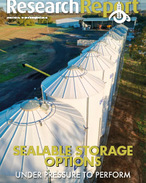The ERF has a slightly different set of steps for participation to the previous process through the CFI. There are two components, each with multiple steps, when considering participation in the ERF.
Component 1: Running and reporting on an
|
6.3.1 Step 1: Project pre-registration and registration
Applicants apply to the CER to register their project as part of the ERF. In doing so, they should estimate the volume of abatement that can be achieved by the project, in accordance with an approved method.
The CER will assess the application and register the project to participate in the ERF. To do so, the regulator must be satisfied that, among other things, the project meets additionality requirements and is consistent with an applicable method, and that the applicant is a fit and proper person.
At this stage you will open an Australian national registry of emissions units (ANREU) account with bank details. A registered project is eligible to receive ACCUs.
A condition of registration for carbon sequestration projects is that all parties with an eligible interest in the land agree in writing to allow the project to go ahead. Eligible interest holders may include financial institutions and Registered Native Title Bodies Corporate.
In Western Australia, projects on Crown Land require the Minister for Lands to provide the State's eligible interest holder (EIH) consent. For more details on State EIH, refer to the DPIRD webpage or contact Department of Planning, Lands and Heritage (DPLH) directly.
6.3.2 Step 2: Run project, report, audit
Run your project as per the project method.
Project owners will need to submit regular reports on their registered projects, including their emissions reductions. The CER will use a risk-based approach to determine the level of assurance, frequency and scope of audits required for a project or type of project.
Reports must include audit reports where scheduled. An initial audit report is required with the first project report. Additional audits can be triggered.
Project owners will receive one ACCU for each tonne of abatement achieved by their project.
6.3.3 Step 3: Claim then hold or sell ACCUs
Applications to claim ACCUs can be made at the same time as report is provided. Once issued into your ANREU account you can choose to hold or sell your ACCUs.
You may choose to sell all or some of your ACCUs to the government through a carbon abatement contract, or you may sell all or some of your ACCUs into the secondary market under a private commercial agreement (which is not regulated or controlled by the government.)
Component 2 (Optional): Bidding to sell ACCUs
|
6.3.4 Step 1: Contract planning
Only registered projects will be considered in the auction qualification process. To participate in an auction, the project owner needs to submit information to the CER that sets out an estimate of emissions reductions to be delivered by their project. They must also demonstrate the project's commercial readiness and their capacity to carry out the project.
To participate in an auction, a project owner must also:
-
agree to enter into a standardised contract with the Commonwealth, if successful at auction
-
provide the regulator with a total quantity and delivery schedule of abatement (as represented by ACCUs ) to be bid into the auction.
6.3.5 Step 2: Contract establishment
If a bid is successful at the auction, the project owner enters into a contract with the CER, representing the Commonwealth, to deliver the agreed quantity of ACCUs for payment at the price bid at auction.
The regulator will use a standardised carbon abatement contract with successful bidders. This will reduce transaction costs, increase transparency and ensure that projects compete for funding at auctions on equal terms.
6.3.6 Step 3: Contract delivery
Project owners who have a contract with the regulator will deliver emissions reductions according to the schedule in that contract, transferring required ACCUs from their ANREU account to the government to meet contract conditions, and will then be paid at the price set out in the contract.
Source: Emissions Reduction Fund Schematic
Explore the full Workshop Manual: The business case for carbon farming: improving your farm’s sustainability (January 2021)
Read the report
RESEARCH REPORTS
1. Introduction: background to the business case
This chapter lays out the basic background and groundwork of the manual
RESEARCH REPORTS
1.2 Being clear about the reasons for participating
Introduction: background to the business case
RESEARCH REPORTS
1.4 Working through the business case for carbon farming
Introduction: background to the business case
RESEARCH REPORTS
1.5 Factors determining project economics
Introduction: background to the business case
RESEARCH REPORTS
1.8 Important features of the business case
Introduction: background to the business case
RESEARCH REPORTS
2. How carbon is farmed under the ERF
This chapter considers in detail the activities that constitute carbon farming
RESEARCH REPORTS
2.5 Carbon farming under the Emissions Reduction Fund
How carbon is farmed under the ERF
RESEARCH REPORTS
3. The policy context and the price of ACCUs
This chapter takes a broad look at the policy context for carbon farming























